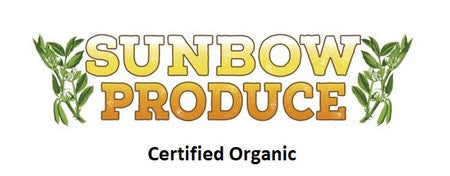Do you find yourself wondering why people get excited about new potatoes? Or maybe you feel like you missed the memo and aren't sure what the difference is between a new potato and well, a potato? You aren't alone! I wondered the same thing when I started exploring fresh locally grown food options. I also wondered why they were more expensive. Sometimes farmers are so busy with our daily chores that we forget to pass on what we learn and why we do things a certain way, like pricing. While I can't address everything here, I do want to sing the praises and share the labor of love that is a new potato.
First things first, the difference between a new potato and a regular ol' potato is that they are harvested before the skins have finished developing, you don't have to peel them, really the only way to do so is to rub them with your hands. A peeler would just make potato strips (hmmm...sounds yummy). The water content is high so they are really moist and tender which also means that the cooking time is much faster than their mature versions. The down side is that you have to eat them within a few days of getting them, without their protective skins and starch development, they don't last. They will get soft and wrinkly as the water evaporates out of them. A "regular" potato has been harvested after the skin is fully formed and has had time to cure. When talking about fresh vegetables in really general terms, curing refers to sitting in specific light and temperature conditions that gives the vegetable time to develop what it needs to withstand long term storage. For potatoes at Sunbow, this means being harvested, packed into boxes with an open top and sitting in a dark, cool environment unwashed. The longer you leave a potato unwashed, the longer it will last without developing sprouts. This is why our fall potatoes are sold with the dirt clods on them.
I know this seems crazy but we start our spring new potatoes in January or February, depending on the weather conditions. We plant them in the protected shelter of a hoop house. As long as they don't freeze or get flooded, they can start growing and developing tubers which is the part we eat, what most people refer to as a potato. The protective shelter also puts limits on what we can do with our first potato crops. We don't use the tractor inside our hoop houses so the potatoes must be planted and harvested by hand. Yes, that's right, each potato is dug from the ground with digging forks and our hands. I've learned that you can get multiple potato crops off of each plant as long as you don't disturb the mother, the main roots that come off of her and keep the plant hilled and watered. Depending on the size, it can take quite a bit of time to get the weight needed for packing orders. It's a labor intensive process that we love but it means charging more in order for it to make business sense. As soon as the potatoes are big enough and abundant enough, we drop the price because "getting weight" becomes less time and labor intensive. Being a land steward minded farmer is a delicate balance, you want to feed people, your soul and also be able to pay your bills to keep it all going.
We do this year to year because we are in awe of this beautiful, delicious tuber. The potato plant is inventive in our eyes...pun not intended but I'm patting myself on the back for it anyway. In the brief time I've been planting potatoes I've learned some awesome things about them. You might know that you can put a sprouted potato into the ground (what I referred to earlier as "the mother") and it will develop shoots that become stems and leaves. It's a large broad leafed plant, a delight to behold, especially so when it blooms. Under the ground, it also sends out shoots that look kind of like grass rhizomes. I'm sure there is a scientific name for them but I call them umbilical cords because guess what? These shoots develop nodules that turn into potatoes! Multiple nodules on each one! The first time I saw this, it took my breath away...it still amazes me to this day.
I muse about how the potato plant "figured out" that the very thing that helps keep it's reproductive system going (the tuber) needs to become unappealing so that they don't all get eaten and go extinct. That's why they turn green, get bitter and become poisonous when they start sprouting! Worry not folks, the potato plant also develops itty bitty potatoes as seeds from the flower blossoms so it has a fail safe in case all of the delicious tubers are roasted, mashed, boiled, broiled or fried.
Mmmm...yet another reason to love potatoes, they are super versatile to eat. I think it's pretty obvious, I love potatoes. I could wax poetic about them if I were a poet but I'll spare you and leave you with this gem from an actual Poet, Joseph Stroud, properly titled, The Potato.

Mary Garrard
May 02, 2020
When I was big enough to use a shovel, my dad let me harvest the potatoes. There was nothing I loved more than putting the shovel in the dirt and discovering the potatoes of all sizes. It was like discovering buried treasure!